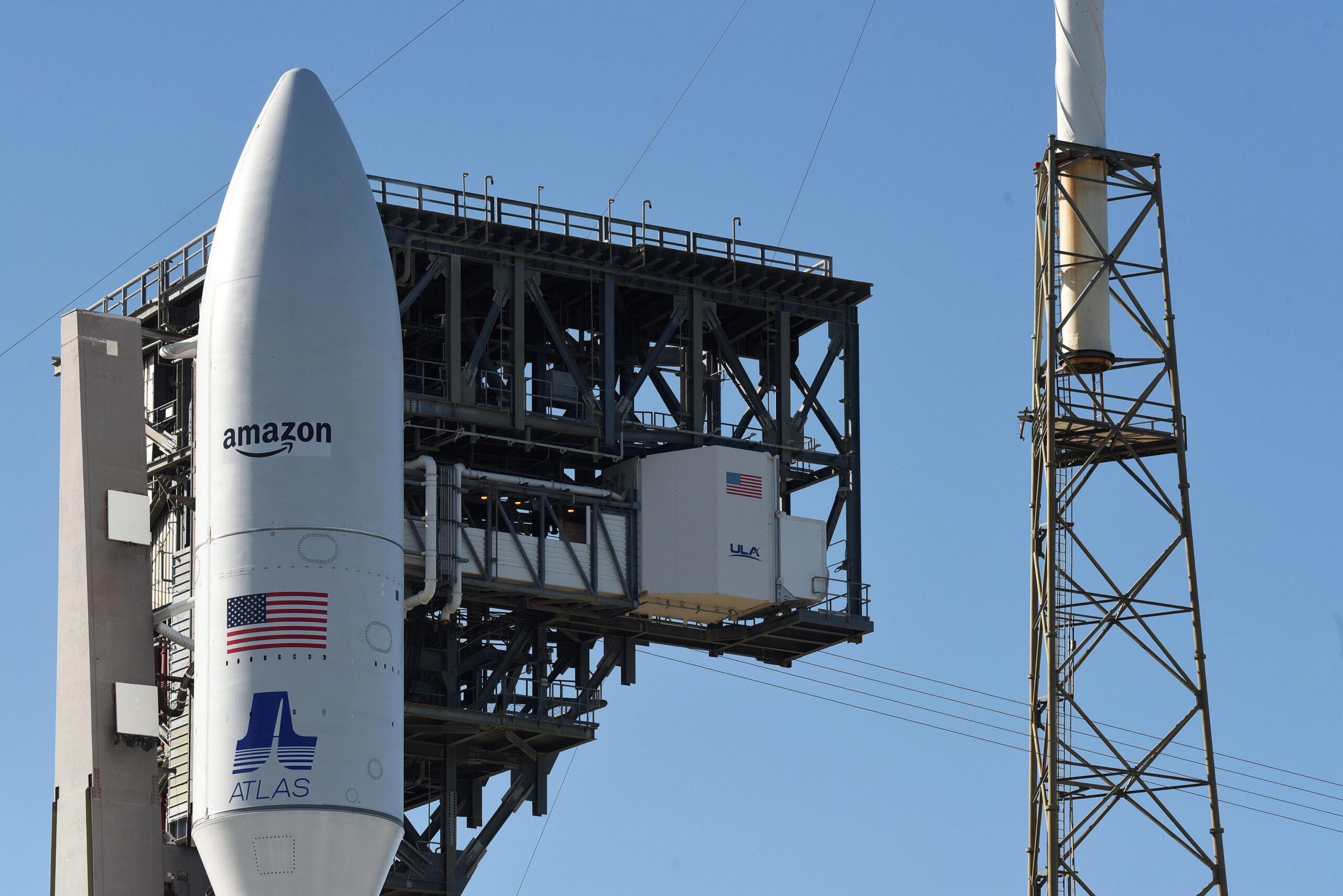
Amazon successfully launched the second batch of its Kuiper internet satellites on Monday, advancing its goal of creating a vast constellation to provide global broadband coverage. The launch took place from Cape Canaveral Space Force Station in Florida at 6:54 a.m. ET, using a United Launch Alliance (ULA) Atlas V rocket carrying 27 satellites.
Ben Chilton, an ordnance engineer at ULA, remarked during the livestream, “We have ignition and lift off of United Launch Alliance Atlas V rocket carrying satellites for Amazon’s Project Kuiper internet constellation, continuing a new chapter in low Earth orbit satellite connectivity.”
Launch Delays and Mission Background
This mission was delayed twice due to weather and a technical issue with the rocket booster. It follows Amazon’s first successful launch of 27 Kuiper satellites earlier this year.
Six years ago, Amazon announced Project Kuiper, aiming to build a constellation of 3,236 internet-beaming satellites in low Earth orbit (LEO). These satellites will compete directly with SpaceX’s Starlink, which currently leads the market with around 8,000 satellites in orbit.
Amazon has already placed 54 Kuiper satellites into orbit and must launch at least half of its planned constellation — 1,618 satellites — by July 2026 to comply with Federal Communications Commission (FCC) requirements.
The company has secured over 80 launches with multiple providers, including rival SpaceX, to deploy its satellites into orbit.
What The Author Thinks
Amazon’s aggressive push into satellite internet signals a significant shift in the battle for global broadband dominance. While Starlink currently holds a strong lead, Kuiper’s entry brings much-needed competition that could drive innovation and better services for consumers worldwide. The race also highlights how space is becoming a critical frontier for technological advancement and geopolitical influence.
Featured image credit: Scientific American
For more stories like it, click the +Follow button at the top of this page to follow us.
